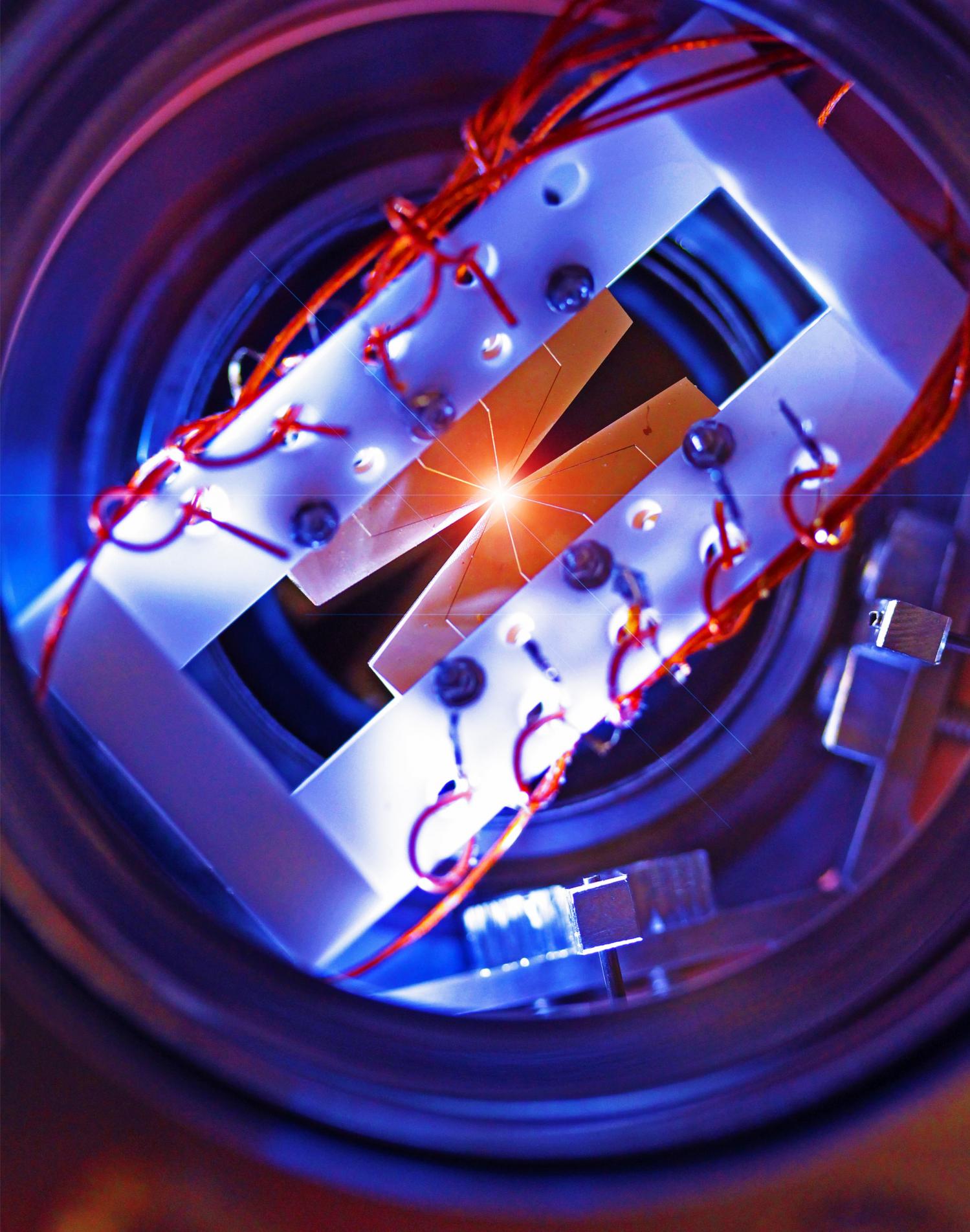Quantum computers promise speedy solutions to some difficult problems, but building large-scale, general-purpose quantum devices is a problem fraught with technical challenges.
To date, many research groups have created small but functional quantum computers. By combining a handful of atoms, electrons or superconducting junctions, researchers now regularly demonstrate quantum effects and run simple quantum algorithms —small programs dedicated to solving particular problems.
But these laboratory devices are often hard-wired to run one program or limited to fixed patterns of interactions between the quantum constituents. Making a quantum computer that can run arbitrary algorithms requires the right kind of physical system and a suite of programming tools. Atomic ions, confined by fields from nearby electrodes, are among the most promising platforms for meeting these needs.
